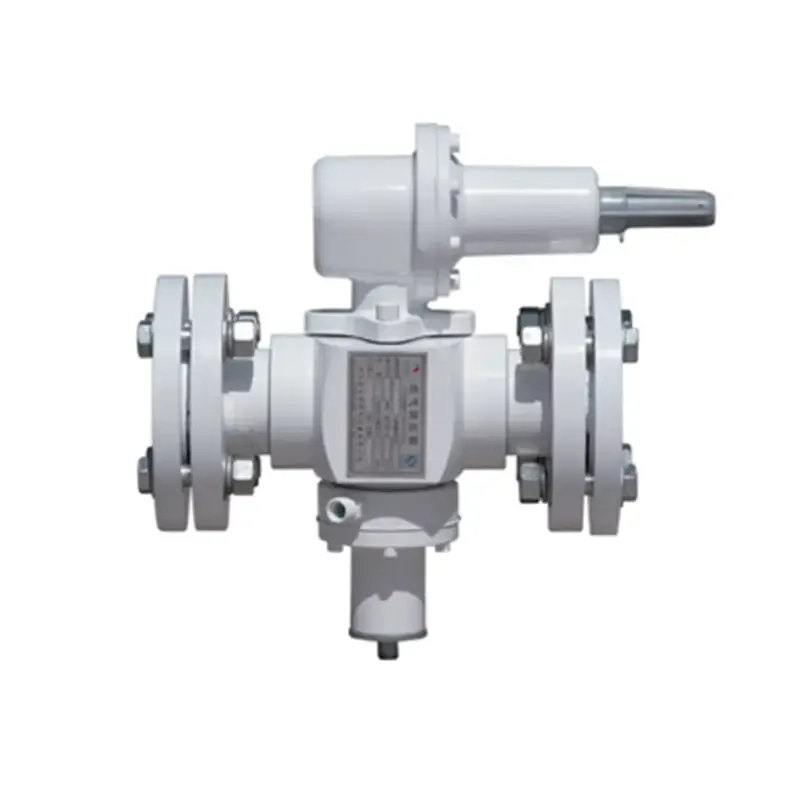
Dec . 12, 2024 14:20
Back to list
مبادل حراري للغاز
Understanding Heat Exchangers for Gases An Overview
Heat exchangers are critical components in various industrial processes, facilitating efficient thermal energy transfer between two or more fluids at different temperatures. Among these fluids, gases play a vital role, especially in applications such as power generation, HVAC systems, and chemical processing. This article will explore the principles, types, and applications of gas heat exchangers, highlighting their importance in enhancing energy efficiency and reducing operational costs.
Principles of Heat Exchange
The fundamental principle behind heat exchangers is the concept of thermal conductivity. When two gas streams with different temperatures come into contact with the heat transfer surface, heat naturally flows from the hotter gas to the cooler one until thermal equilibrium is reached. This process can be classified into two primary modes conduction and convection. Depending on the design of the heat exchanger, both modes work in tandem to ensure efficient thermal exchange.
Types of Gas Heat Exchangers
Heat exchangers can be categorized based on several criteria, including flow arrangement, construction materials, and operational principles. The most common types include
1. Counterflow Heat Exchangers In counterflow exchangers, the two gas streams flow in opposite directions. This arrangement allows for a higher temperature difference between the gases along the length of the exchanger, maximizing heat transfer efficiency.
2. Parallel Flow Heat Exchangers In parallel flow configurations, both gas streams move in the same direction. This setup is typically less efficient than counterflow designs since the temperature difference is not maintained along the entire length of the exchanger.
3. Crossflow Heat Exchangers In crossflow configurations, two gases move perpendicular to each other. This design is commonly used when one of the streams is a gas and the other is a liquid, as it can efficiently handle various flow conditions.
4. Shell and Tube Heat Exchangers This design consists of a series of tubes, one set containing the hot gas and the other containing the cold gas or fluid. Shell and tube exchangers are robust and can handle high-pressure applications.
5. Air-to-Air Heat Exchangers These are specifically designed to allow two air streams to exchange heat. They are widely used in HVAC systems for energy recovery and improving indoor air quality.
.
Gas heat exchangers are employed across multiple industries and applications. Some notable examples include
مبادل حراري للغاز

- Power Generation In gas-fired power plants, heat exchangers are utilized to recover waste heat from exhaust gases, improving overall thermal efficiency and reducing emissions.
- Chemical Processing Many chemical reactions are exothermic, producing heat that can be recovered and reused in other parts of the process. Heat exchangers play a crucial role in managing thermal energy, ensuring optimum reaction conditions.
- HVAC Systems Heat exchangers in HVAC setups not only help in maintaining desired indoor temperatures but also significantly enhance energy efficiency by recovering heat from exhaust air or condensing units.
- Automotive Industry In vehicles, heat exchangers are used in the cooling systems to regulate engine temperatures and maintain optimal performance. They also play a role in exhaust gas recirculation systems to reduce emissions.
Benefits of Using Gas Heat Exchangers
The utilization of heat exchangers in gas applications brings several benefits
- Energy Efficiency By recovering and reusing waste heat, heat exchangers contribute to energy savings and lower operational costs.
- Environmental Impact Effective heat recovery systems lead to reduced greenhouse gas emissions, supporting sustainability efforts in various industries.
- Operational Flexibility With advancements in design and materials, modern gas heat exchangers can operate efficiently under diverse conditions, making them suitable for a wide range of applications.
- Compact Design Many new designs are highly compact, allowing for integration into existing systems with minimal modifications.
Conclusion
Heat exchangers for gases are indispensable in modern industrial processes, offering significant benefits in efficiency and sustainability. As industries continue to seek ways to minimize energy consumption and environmental impact, the role of gas heat exchangers will become increasingly crucial. By understanding their principles, types, and applications, engineers and industrial professionals can make informed decisions that enhance system performance and contribute to a more sustainable future.
Next:
Latest news
-
Safety Valve Spring-Loaded Design Overpressure ProtectionNewsJul.25,2025
-
Precision Voltage Regulator AC5 Accuracy Grade PerformanceNewsJul.25,2025
-
Natural Gas Pressure Regulating Skid Industrial Pipeline ApplicationsNewsJul.25,2025
-
Natural Gas Filter Stainless Steel Mesh Element DesignNewsJul.25,2025
-
Gas Pressure Regulator Valve Direct-Acting Spring-Loaded DesignNewsJul.25,2025
-
Decompression Equipment Multi-Stage Heat Exchange System DesignNewsJul.25,2025

